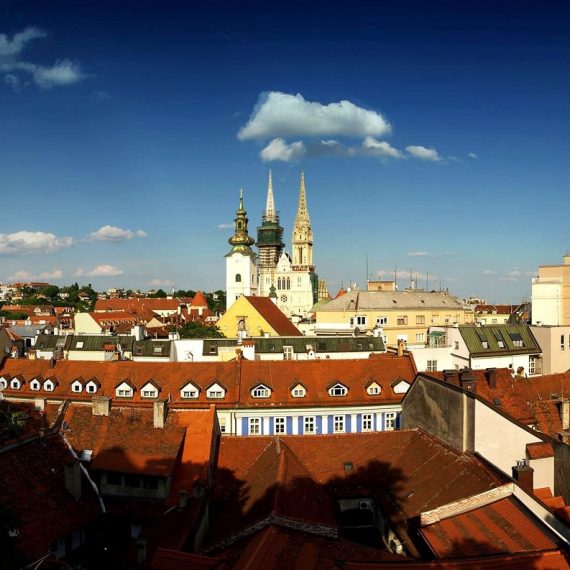10 things you need to know about NEM Zagreb venue city

Zagreb is the Croatian capital and relatively young middle-European metropolis with about 800,000 inhabitants. The population of the Zagreb urban agglomeration is about 1.1 million, approximately a quarter of the total population of Croatia.
The city lies at an elevation of approximately 122 meters (400 feet) above sea level.
Zagreb covers a total area of 641 square kilometers (247 square miles).

The center of the city considered to be the historic district of the Upper Town (Gornji grad) and Kaptol, and Lower town (Donji Grad), which has an exceptional diversity of architecture from Baroque to the present day.
The main town square is Ban Josip Jelačić Square, which is a favorite attraction of tourists in the city of Zagreb.

Upper town is the most popular district in Zagreb with a high number of historic sites and tourist attractions.
Interesting fact is that the street lights in the Upper Town have a tradition of their own, one that does not rely on electricity. The 217 gas lamps that illuminate the old streets have been lit by hand, one by one, since 1863.

Zagreb has the shortest funicular in the world, whose track is 66 meters long, while the ride lasts only 64 seconds. The cable car departs from Lower Town (Tomićeva street) and drive to the Upper Town.

The Zagreb Cathedral on Kaptol is a Roman Catholic institution and not only the tallest building in Croatia but also the most monumental sacral building in Gothic style southeast of the Alps. It is dedicated to the Assumption of Mary and to kings Saint Stephen and Saint Ladislaus. Its prominent spires are considered to be landmarks as they are visible from most parts of the city.

Lenuci’s or green horseshoe is a U-shaped system of 8 city squares with parks in downtown Zagreb (Nikola Šubić Zrinski, Josip Juraj Strossmayer Square, King Tomislav Square, dr. Ante Starčević Square, Marko Marulić Square, Trg Ivana, Anthony and Vladmira Mažuranića and Republic of Croatia Square) and Botanical garden. Those squares have been created in the late 19th and early 20th centuries, which give Zagreb attribute of the modern city.

The Zagreb City Museum, Museum of Contemporary Art, Mimara Museum, Strossmayer Gallery of Old Masters, Ethnographic Museum, Archaeological Museum, Croatian History Museum and the Museum of Arts and Crafts are among those housing works of art and exhibits that testify to Croatia’s traditions and past going back to prehistoric times. The Museum of Broken Relationships, which stores objects that played a significant role in doomed romances, is one of Zagreb’s most offbeat – and most visited – museums. Other unusual offerings include the Museum of Illusions, which has an anti-gravity room and the largest collection of holograms in the region.

Croatian National Theatre is one of Zagreb’s most elegant and spectacular buildings!
It was designed by the renowned Viennese architects Ferdinand Fellner and Herman Helmer. In front of the theatre, you will find The Well of Life, designed by Ivan Meštrović in 1905. Experts claim the statue is among Mestrovic’s finest pieces of art.

Zagreb School of Animation is one of the best schools of this type in the world. A proof of this is a mega popular animated series ‘Baltazar’. This series has a total of 59 episodes. Its specificity is the fact that the rights to show the series have been purchased in 30 countries worldwide. The series is most viewed in the Scandinavian countries.

Croatian cuisine is diverse and exciting – and the Dolac market, affectionately called “the Belly of Zagreb”, is a gastronomical experience to be reckoned with.
In particular, visitors are drawn to a traditional aromatic biscuit known as the 'paprenjak'. The cookie, once made by the women of old Zagreb, is an unusual combination of honey, walnuts, and pepper.
The licitar is another popular biscuit of days gone by, colorfully adorned and shaped like a heart. Tradition dictates that the biscuit can be given as a symbol of love and affection on special occasions.

